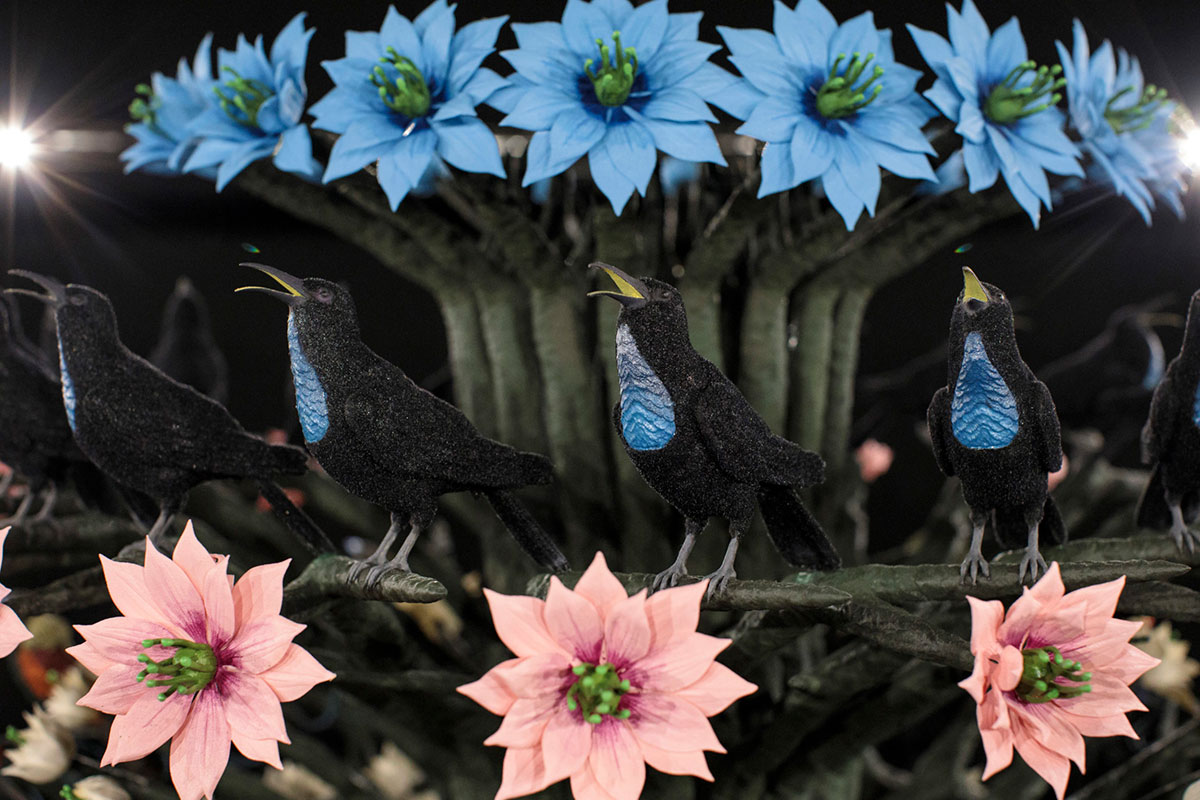PRESENTATION: Mat Collishaw-The Machine Zone
 Throughout his 30-year career, Mat Collishaw has contemplated the nature of the human subconscious and explored ways to influence it through various media. Through optical illusions, paintings, projections and moving sculptures, the artist creates works and scenarios that directly and unconsciously engage their viewers. The works encourage us to think about fundamental questions of psychology, history, sociology and science. Behind the richness and visual appeal of each work there is a deep exploration of how we perceive and are influenced by the world today through images, and modern technology.
Throughout his 30-year career, Mat Collishaw has contemplated the nature of the human subconscious and explored ways to influence it through various media. Through optical illusions, paintings, projections and moving sculptures, the artist creates works and scenarios that directly and unconsciously engage their viewers. The works encourage us to think about fundamental questions of psychology, history, sociology and science. Behind the richness and visual appeal of each work there is a deep exploration of how we perceive and are influenced by the world today through images, and modern technology.
By Efi Michalarou
Photo: Gary Tatintsian Gallery Archive
Questions regarding behavioral manipulation, programming, temporal reality all linger in the viewing experience. Mat Collishaw presents his solo exhibition “The Machine Zone” at Gary Tatintsian Gallery. “Machine zone” is a term describing the state gamblers enter when they are fully immersed in a game and the outside world recedes. The term is used to describe the addictive phenomenon caused by variable rewards. Players, not knowing what card is coming next or when they will be rewarded, are compelled to keep returning to the table. This psychological insight is used by software designers, who incorporate the concept into the mechanics of social media platforms. They introduced functions such as comments, likes and shares to encourage users to return to a platform repeatedly (often compulsively) to monitor their social media feeds. The Machine Zone refers to our increasing dependence on the ever more mechanized, technology-driven world. “The Machine Zone “(2019), for which the exhibition is named, is an installation of robotic birds that perform a repetitive algorithm of actions. The work refers to the 1950s experiments of the American psychologist Burrhus Frederic Skinner, in which he analyzed the behavior of small animals driven by a random reward system. Skinner’s basic methodology was to give his subjects a signal to encourage them to perform actions in exchange for a reward. Skinner’s conclusion, that our behavior is ‘a response to circumstances and environmental influences’, underlies much of the research on the algorithms that govern our social networking interactions today. Taking advantage of the vulnerability of the human psyche, algorithms shape our habits and create unconscious addictions. The series of paintings called “The Operant Conditioning Chamber” (2022) is based on photographs of Skinner’s early experiments. The birds shown there, confined in cages to study their behavior, became unwitting agents in collecting data that could then be used for manipulation and financial profit. The “Centrifugal Soul” (2016), a large-scale zoetrope, was created in collaboration with renowned contemporary evolutionary psychologist Geoffrey Miller. A zoetrope an elegant structure invented during the Victorian era, references to which invariably appear in Collishaw’s works. In the center of the zoetrope is a platform adorned with models of flowers and birds. Rotating at 60 rpm, the platform is illuminated with flashes of strobe light every second, creating the illusion of movement as the birds hover over the opening buds and perform mating dances with their bright plumage. Birds are programmed by nature to perform these courtship rituals to breed and maintain the species. Technology companies have developed ways to capitalize on this natural instinct, encouraging us through social media and smartphones to constantly create and project an idealized version of ourselves, presenting ourselves to the outside world as more successful and desirable than we really are. “Alpha Omega ΑΩ” (2016) is a visualization of the human desire to conquer new spaces. In a video projected onto the glass of a discarded astronaut’s helmet, the viewer sees an image of a chimpanzee peering curiously at the world on the other side of the glass. Similarly, humans are eager to explore the world beyond their natural habitat and, driven by curiosity, set out to conquer space and colonize distant territories. The “Nerve Rack” (2019) was originally created specifically for the former Ushaw Seminary in County Durham as a site-specific installation. A life-size mechanical figure of an eagle, it was installed in the chapel of St. Cuthbert’s Church opposite one of County Durham’s treasures, a lectern topped with a bronze sculpture of an eagle designed by the 19th century architect Augustus Pugin. The majestic images embodied symbols of opposing religious beliefs in 16th century England. Facing each other, they represented the confrontation of two monumental religions: Catholicism and Protestantism. Symbolizing the dangers of extremism and intransigence, Collishaw’s metallic eagle opens its wings menacingly, clutching in its talons its prey – a mouse wiggling helplessly in an attempt to escape its fate. “Expiration Painting” (2016) is a series of paintings in Plexiglas frames that are reproductions of works by Old Masters, the subjects of which touch upon the transience of human life and its finitude. Collishaw actualizes this “eternal” theme through a modern presentation of classical images. The reproductions remain incomplete and resemble a sheet of paper with an image not fully printed out because the printer ran out of ink, forcing the viewer to think about the brevity of the moment even in the era of high-speed technology.
Photo: Mat Collishaw, The Centrifugal Soul, 2016, Acrylic, aluminium, steel, LED lights, motor, electronic circuitry, resin and paint, 197 x 335 x 335 cm, Courtesy of the Artist and Gary Tatintsian Gallery
Info: Gary Tatintsian Gallery, Serebryanicheskaya Naberezhnaya 19, Moscow, Russia, Duration: 25/2-25/6/2022, Days & Hours: Tue-Fri 12:00-20:00, Sat 12:00-18:00, https://tatintsian.com








